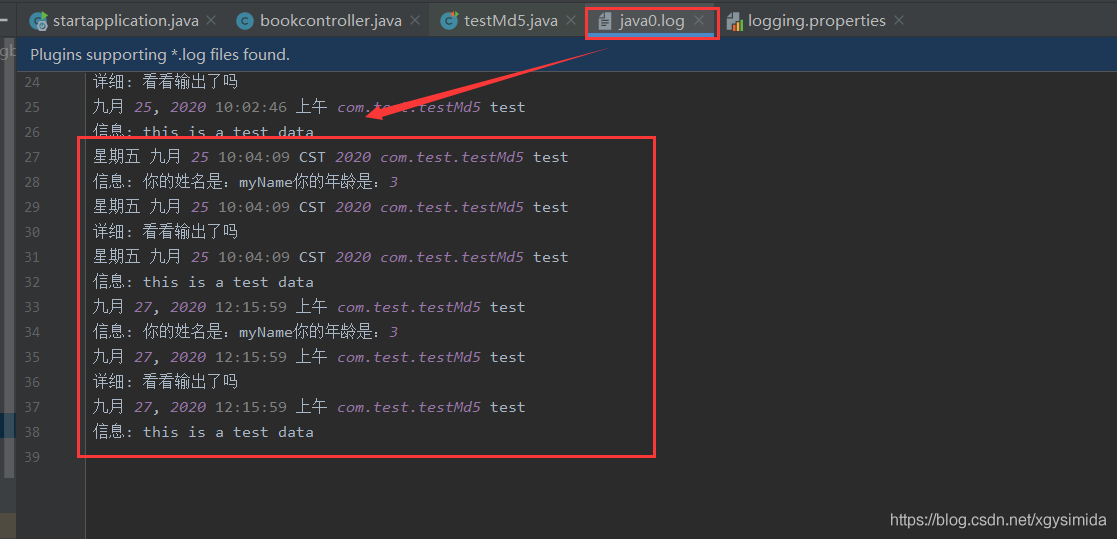Springboot+Redis實(shí)現(xiàn)API接口限流的示例代碼
添加Redis的jar包.
<dependency> <groupId>org.springframework.boot</groupId> <artifactId>spring-boot-starter-data-redis</artifactId></dependency>
在application.yml中配置redis
spring: ## Redis redis: database: 0 host: 127.0.0.1 port: 6379 password: jedis:pool: max-active: 8 max-wait: -1ms max-idle: 8 min-idle: 0 timeout: 2000ms
添加自定義注解
@Inherited@Documented@Target({ElementType.FIELD,ElementType.TYPE,ElementType.METHOD})@Retention(RetentionPolicy.RUNTIME)public @interface AccessLimit { //指定second 時間內(nèi) API請求次數(shù) int times() default 4; // 請求次數(shù)的指定時間范圍 秒數(shù)(redis數(shù)據(jù)過期時間) int second() default 10;}
編寫攔截器
import com.ys.xlb.annotation.AccessLimit;import com.ys.xlb.bean.Code;import com.ys.xlb.exception.GlobalException;import com.ys.xlb.utils.IpUtils;import com.ys.xlb.utils.RequestUtils;import com.ys.xlb.utils.ResultUtils;import lombok.extern.slf4j.Slf4j;import org.springframework.data.redis.core.RedisTemplate;import org.springframework.stereotype.Component;import org.springframework.web.method.HandlerMethod;import org.springframework.web.servlet.HandlerInterceptor;import org.springframework.web.servlet.ModelAndView;import javax.annotation.Resource;import javax.servlet.http.HttpServletRequest;import javax.servlet.http.HttpServletResponse;import java.lang.reflect.Method;import java.util.concurrent.TimeUnit;/** * @ClassName AccessLimitInterceptor * @description: API請求限流攔截器 * @time 2019-04-20 11:08 **/@Slf4j@Componentpublic class AccessLimitInterceptor implements HandlerInterceptor { @Resource private RedisTemplate<String, Integer> redisTemplate; @Override public boolean preHandle(HttpServletRequest request, HttpServletResponse response, Object handler) throws Exception {try{ // Handler 是否為 HandlerMethod 實(shí)例 if(handler instanceof HandlerMethod){// 強(qiáng)轉(zhuǎn)HandlerMethod handlerMethod = (HandlerMethod) handler;// 獲取方法Method method = handlerMethod.getMethod();// 是否有AccessLimit注解if(!method.isAnnotationPresent(AccessLimit.class)){ return true;}// 獲取注解內(nèi)容信息AccessLimit accessLimit = method.getAnnotation(AccessLimit.class);if(accessLimit == null){ return true;}int times = accessLimit.times();//請求次數(shù)int second = accessLimit.second();//請求時間范圍//根據(jù) IP + API 限流String key = IpUtils.getIpAddr(request) + request.getRequestURI();//根據(jù)key獲取已請求次數(shù)Integer maxTimes = redisTemplate.opsForValue().get(key);if(maxTimes == null){ //set時一定要加過期時間 redisTemplate.opsForValue().set(key, 1, second, TimeUnit.SECONDS);}else if(maxTimes < times){ redisTemplate.opsForValue().set(key, maxTimes+1, second, TimeUnit.SECONDS);}else{ // 30405 API_REQUEST_TOO_MUCH 請求過于頻繁 RequestUtils.out(response, ResultUtils.error(Code.API_REQUEST_TOO_MUCH)); return false;} }}catch (Exception e){ log.error('API請求限流攔截異常,請檢查Redis是否開啟!',e); throw new GlobalException(Code.BAD_REQUEST,e.getMessage());}return true; } @Override public void postHandle(HttpServletRequest request, HttpServletResponse response, Object handler, ModelAndView modelAndView) throws Exception { } @Override public void afterCompletion(HttpServletRequest request, HttpServletResponse response, Object handler, Exception ex) throws Exception { }}
方法中的IP工具類方法
/** * IpUtils工具類方法 * 獲取真實(shí)的ip地址 * @param request * @return */ public static String getIpAddr(HttpServletRequest request) {String ip = request.getHeader('X-Forwarded-For');if(org.apache.commons.lang.StringUtils.isNotEmpty(ip) && !'unKnown'.equalsIgnoreCase(ip)){ //多次反向代理后會有多個ip值,第一個ip才是真實(shí)ip int index = ip.indexOf(','); if(index != -1){return ip.substring(0,index); }else{return ip; }}ip = request.getHeader('X-Real-IP');if(org.apache.commons.lang.StringUtils.isNotEmpty(ip) && !'unKnown'.equalsIgnoreCase(ip)){ return ip;}return request.getRemoteAddr(); }
RequestUtils.out()方法
/** * @Title: out * @Description: response輸出JSON數(shù)據(jù) * @param response : 響應(yīng)請求 * @param object: object * @return void **/ public static void out(ServletResponse response, Object object){PrintWriter out = null;try { response.setContentType('application/json;charset=UTF-8'); response.setCharacterEncoding('UTF-8'); out = response.getWriter(); out.println(JSONObject.fromObject(resultMap).toString());} catch (Exception e) { log.error('輸出JSON報錯!'+e);}finally{ if(null != out){out.flush();out.close(); }} }
配置攔截器
@Configurationpublic class ApplicationConfig implements WebMvcConfigurer { //這里需要注入攔截器 否則無法獲取到攔截器注入的RedisTemplate<String, Integer> redisTemplate; @Bean public AccessLimitInterceptor accessLimitInterceptor(){return new AccessLimitInterceptor(); } /** * 配置攔截器 * @author lance * @param registry */ @Override public void addInterceptors(InterceptorRegistry registry) {registry.addInterceptor(new LoginInterceptor()).addPathPatterns('/**').excludePathPatterns('/static/**','/login.html','/user/login');//API限流攔截registry.addInterceptor(accessLimitInterceptor()).addPathPatterns('/**').excludePathPatterns('/static/**','/login.html'); }}
配置攔截器的類中必須先注入這個攔截器否則無法獲取到攔截器注入的RedisTemplate<String, Integer> redisTemplate
使用注解
/** * @Title: selectAll * @Description: 查詢文章信息 **/ @AccessLimit(times = 5) @RequestMapping(value = 'selectAll' , method = {RequestMethod.GET,RequestMethod.POST}) //GetMapping(value = 'selectAll') public ResultBody selectAll(Article article) {return articleService.selectAll(article); }
請求測試

時間間隔為默認(rèn)的10s, 10s內(nèi)請求第6次出現(xiàn)此返回值,完成.
參考博客:https://blog.csdn.net/zrg523/article/details/82185088
到此這篇關(guān)于Springboot+Redis實(shí)現(xiàn)API接口限流的示例代碼的文章就介紹到這了,更多相關(guān)Springboot+Redis接口API限流內(nèi)容請搜索好吧啦網(wǎng)以前的文章或繼續(xù)瀏覽下面的相關(guān)文章希望大家以后多多支持好吧啦網(wǎng)!
相關(guān)文章:

 網(wǎng)公網(wǎng)安備
網(wǎng)公網(wǎng)安備